
The Kew Bridge Steam Museum dubs itself ‘London’s Museum of Water Supply’. It is housed in the historic premises of the former Grand Junction Water Works Company. Several of the Company’s beam pumping engines are in their original positions. As the number of engines was increased over the years to meet demand, the engines are diverse, rather than being a matched set, as at, e.g. Crossness. The Museum also houses several collected steam pumping engines from elsewhere, and one original and several collected diesel pump engines.
The 90 inch and 100 inch engines (original) are so big that the visitor is obliged to stand inside the engine mechanism rather than beside it.
The tower is not a chimney, but contains a pressure-balancing water standpipe.
Most of the engines are in working order, and a selection of them can be seen running on ‘steam’ weekends. It’s worth going on a weekend when the engines are being run in turn, if you can. I spent over four hours at the site on my visit.
If you are interested in steam power and industrial archaeology this is well worth a visit.
The Museum is a few minutes’ walk from Kew Bridge railway station. On-site parking is limited.
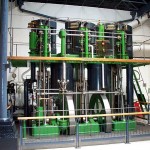


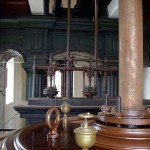

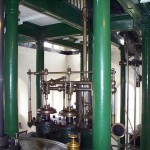
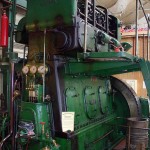
Day: 6 April 2013
Knole, Kent
 National Trust
National Trust
One’s first impression of Knole is that it’s big. The frontage is very long, and is exceeded by the depth, and there are seven courtyards. On the approach one can also see part of the massive wall of Lord Sackville’s walled garden.
Passing through the arched main entrance, one enters the Green Court, with some fine frontages. Visitor reception and the garden are to the right. Note that after checking in (or paying) at the visitor reception, one is expected to present one’s ticket at the garden entrance (if open) and at the Great Hall.
It’s worth making the effort to come on a Tuesday, when Lord Sackville’s walled garden is open. The walled garden is the size of a municipal park and features trees rather than flowerbeds in a variety of differing areas. It wraps around two sides of the house, (SW & SE) and these exteriors can not be seen from outside the garden. (Actually when I visited, the south end of the house was wrapped in scaffolding and plastic, and not visible anyway.) The wider park (huge) is rather bare and brown by comparison.
The Stone Court has some fine frontages. The Great Hall is an impressive room with a fine carved screen. Beyond it, only a fraction of Knole is open to visitors, mostly in areas behind the SW and SE frontages. There is a large collection of paintings, and some very old furniture collected from Royal palaces, and a collection of fine china. There is a room with furniture made of silver. The house dates from the Tudor period, and has not been radically remodelled since, so expect everything to look … old. At least one area is alarmed, so don’t let your brat run around unchecked 🙂
Be aware that the interior of the house is unheated and draughty, so if you visit on a chilly, breezy spring day, dress as for outdoors, as it will be as cold as the park! The old ‘Estate Office’ is the only visitor room that is properly heated.
If you have time, walk around the outside towards the tea-room to look at the north exterior and peer into the Stable Court (private).
Knole is a healthy 1.5 mile walk from Sevenoaks railway station, mostly uphill. Parking at the house is £4 (NT members free).
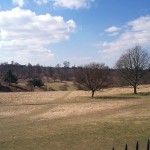
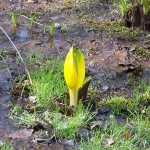
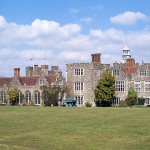

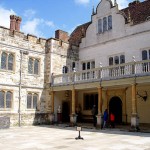
(click on images to enlarge)
